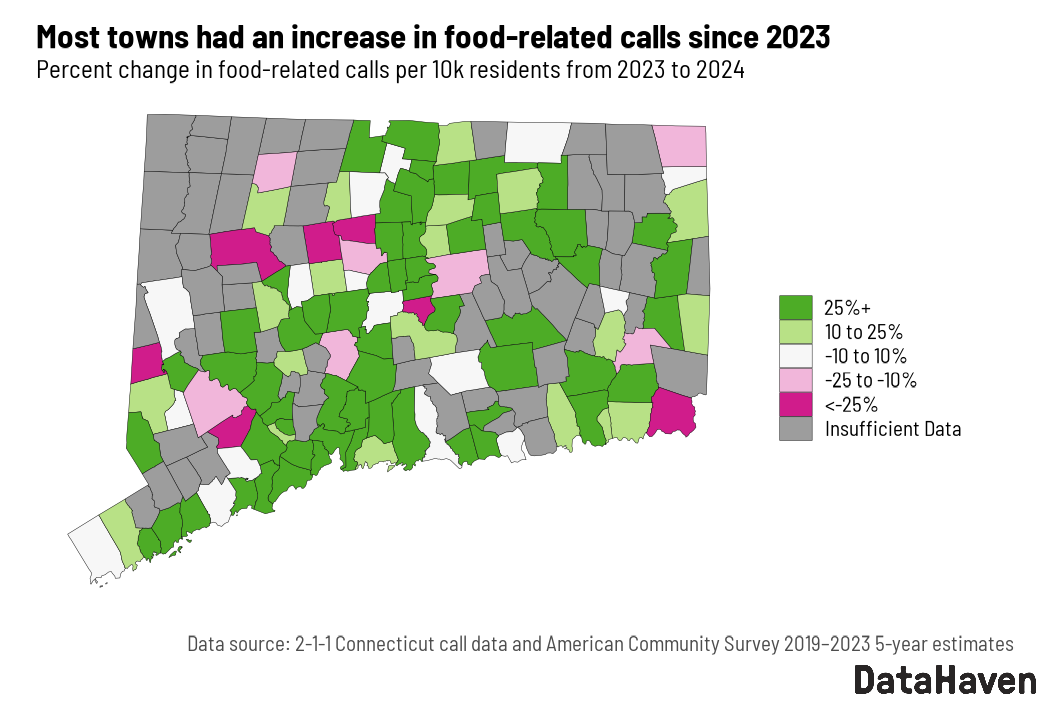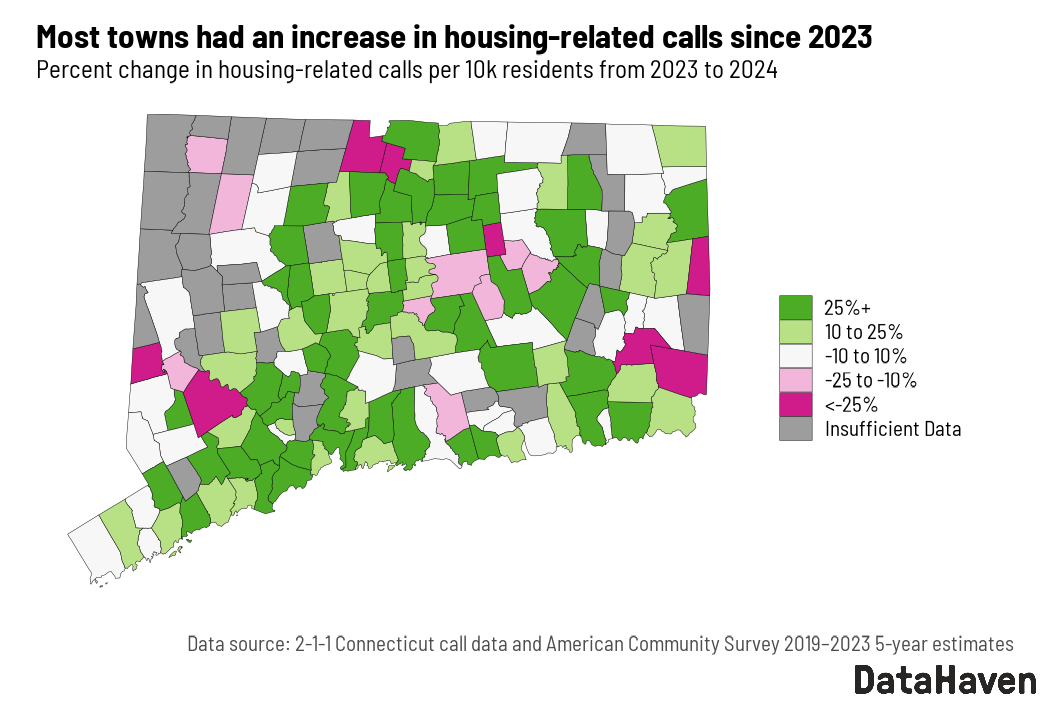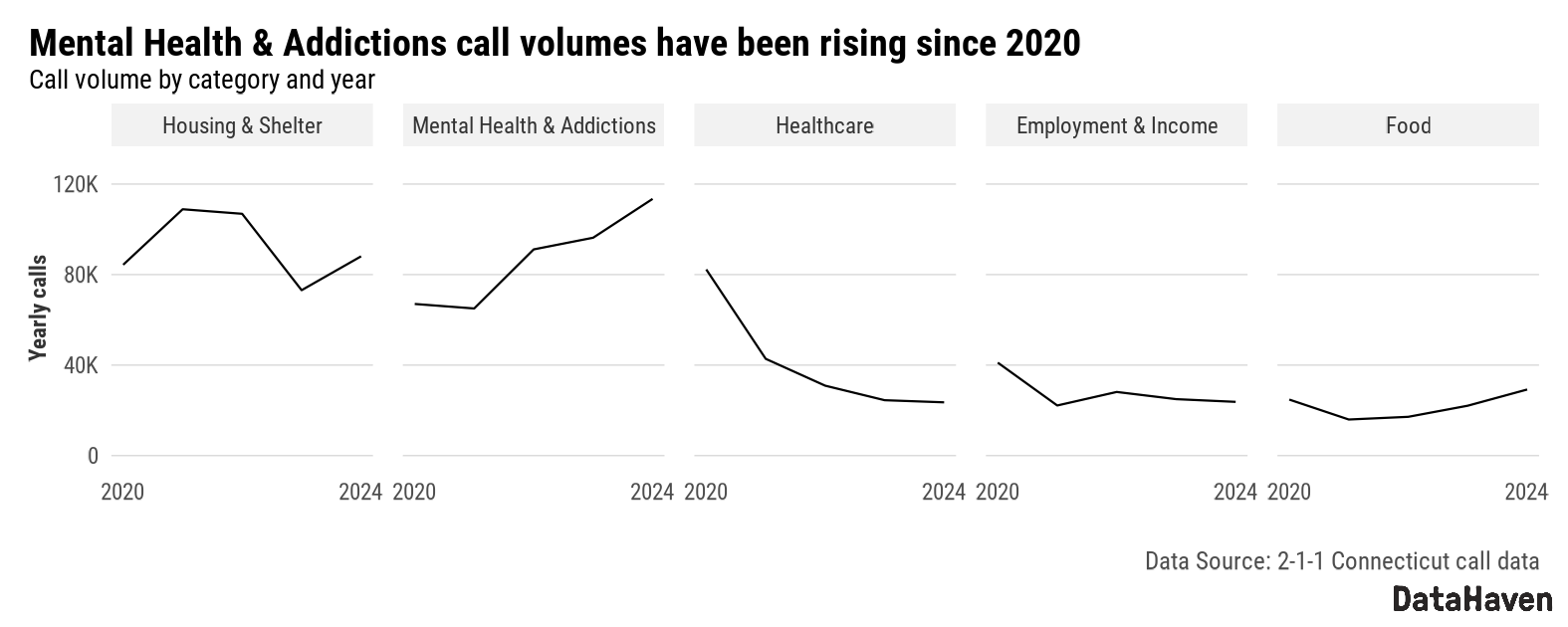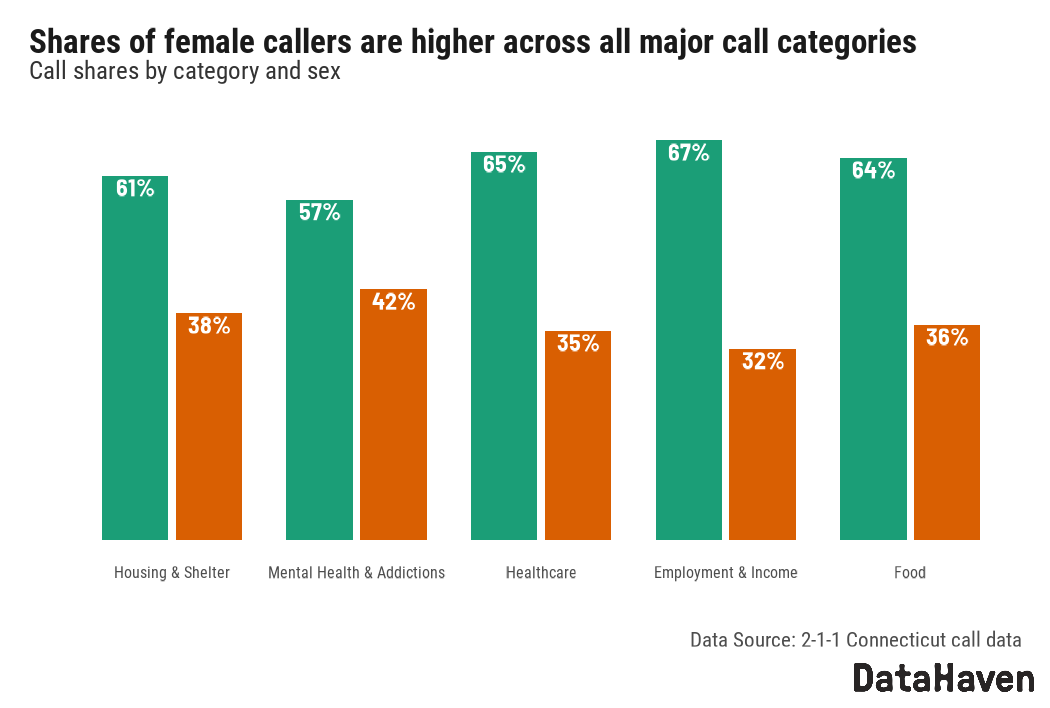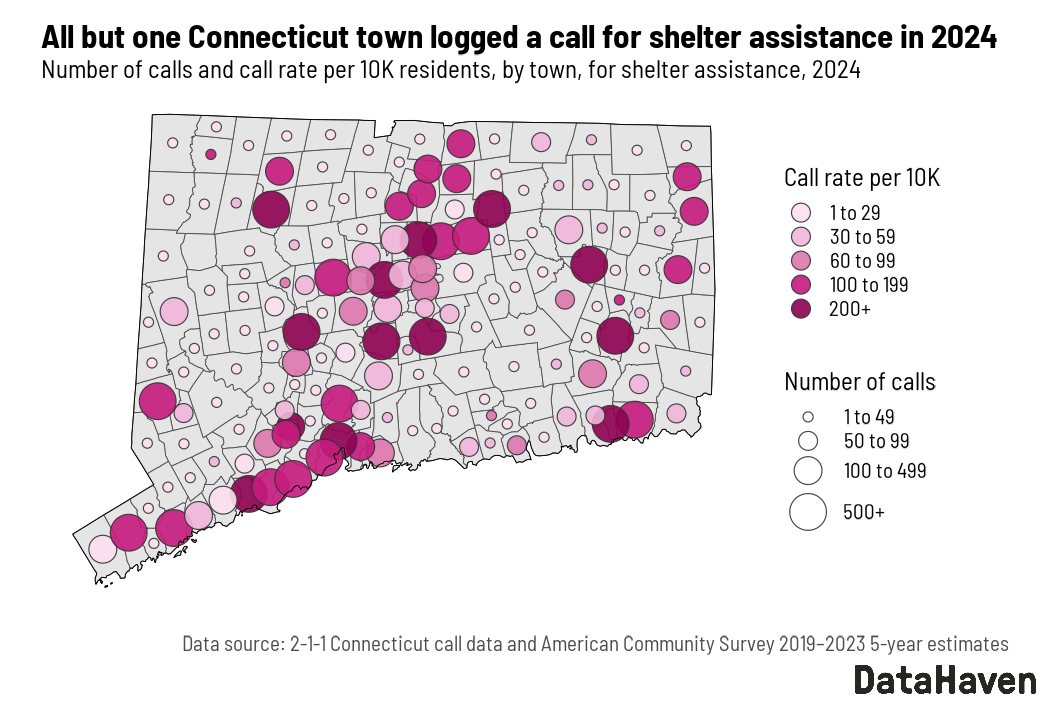All DataHaven Programs, Economy, Health, Housing
DataHaven analysis of Connecticut 211 calls reveals widespread increase in requests for food- and housing-related assistance during the past year
By Andrew Carr, Kelly Davila, and Mark Abraham, DataHaven
The number of calls to United Way’s Connecticut 211 that requested assistance for food, housing, and mental health needs increased from 2023 to 2024. Maps created by DataHaven show that calls increased in towns all over the state.
In some areas, the increase in call volumes tracks with needs that can be observed in other datasets. For example, rates of food insecurity and housing insecurity among Connecticut adults both hit all-time highs in the 2024 DataHaven Community Wellbeing Survey, which has been tracking those indicators statewide since 2015. Food insecurity rates were much lower in 2021, particularly among families with children; families received an expanded federal child tax credit during that year.
The DataHaven report also finds that calls are higher among women. This could relate to gender inequities, as women report significantly higher rates of financial need statewide when compared to men, according to DataHaven’s 2024 survey. For example, in 2024, 21 percent of women, 14 percent of men, and 32 percent of nonbinary adults statewide reported that they had been unable to afford food at times during the past year.
The 211 call data analyzed by DataHaven could allow policymakers to better understand how the need for assistance is related to other data. The data in this report may differ from the data presented elsewhere due to the ways we deduplicate call records and call requests. For the purposes of this section, a “call” refers to a single caller, who may have many needs. A “request” is an individually-tagged program or service the caller is in search of.
Looking in-depth at calls for shelter assistance
According to our analysis, 211 Connecticut received more than 62,000 calls for shelter-related assistance in 2024, comprising 71 percent of all calls associated with a housing need, and 18 percent of all calls received across the state.
Homelessness has been increasing annually in Connecticut and nationally. In fact, 2024 was the year with the highest rate of homelessness ever recorded in the United States, with an estimated 771,480 Americans experiencing homelessness, including 3,410 Connecticut residents, according to a December 2024 report by the U.S. Department of Housing and Urban Development. In Connecticut, an estimated 32 percent of homeless people were families with children and 5 percent were unaccompanied youth. These are, however, likely undercounts of the homeless population due to data being collected on only one night per year.
The increasingly limited supply of housing combined with rapidly rising prices during the past decade means that more and more renters may find themselves in need of emergency housing assistance, such as shelters. For example:
● Zillow found that rents in the Greater Hartford area rose by nearly 8 percent from 2023 to 2024, the fastest increase of any major metropolitan area in the United States.
● Data from the Census Housing Vacancy Survey show that Greater New Haven had the second-lowest rental vacancy rate of any metropolitan area in the United States between January 2023 and September 2024, with just 2.90 percent of units vacant, with Fairfield County ranking third in the nation at 2.92 percent, and Greater Hartford not far behind at 4.28 percent.
● In 2024, the DataHaven Community Wellbeing Survey found that 12 percent of adults had trouble paying for housing costs at some point in the past year, an increase from 6 percent of adults in 2015. Fourteen percent of adults with children at home and 18 percent of renters struggled to cover housing costs in 2024.
Homelessness is often the result of continuous housing instability that is largely preventable with the right combination of counseling and social assistance. 211 Connecticut houses a Coordinated Action Network (CAN) platform that connects callers facing housing insecurity or loss of housing through evictions or other circumstances with services that can help them.
On the whole, DataHaven’s analysis of the 211 Connecticut call data show that call rates for shelter are highest in Connecticut towns where at least 30 percent of households are renters. As the share of renters grows, so too does the rate for shelter assistance calls. Furthermore, the rate of calls for shelter assistance increases somewhat with the ratio of rent to income, though many towns with relatively modest rent-to-income ratios also have high call rates. Towns across the state, including urban centers like Bridgeport, Hartford, and New London, suburban towns like Vernon, Enfield, and Milford, smaller urban areas like Torrington, Meriden, Middletown, and the Lower Naugatuck Valley, and several rural towns in Eastern Connecticut, all have high call rates for shelter assistance (see map).
All of this speaks to a deep need statewide for affordable housing. A low supply of available housing has quickly increased the cost of both rental units and single-family homes. As a result, thousands of Connecticut residents are reaching out for housing assistance each month.
Methods
For this analysis, DataHaven used Connecticut 211 call data provided by the United Way of Connecticut. The dataset’s unit of analysis is call need – each row represents a unique call need, and individual calls may appear multiple times if attributed to more than one need. The data were deduplicated to remove multiple entries from the same caller within the same need category. Yearly call volumes represent the total number of calls each year. Call rates are the number of calls per 10,000 residents in a given area. Population estimates are based on the Total Population (B01003) table from the 2019-2023 American Community Survey (ACS). In the maps, call rates were suppressed for towns with fewer than ten calls in either 2023 or 2024. This analysis does not include requests that were made via the 211 website.

